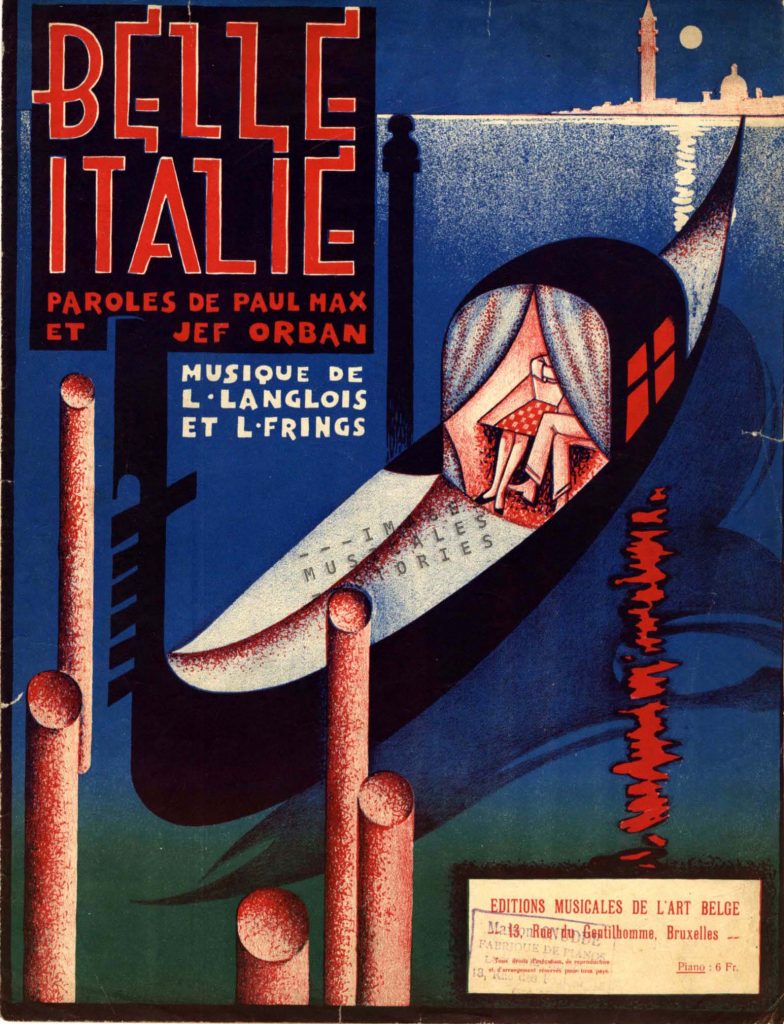
Without the post from Olivier Castel we would never have paid attention to the shape of the gondola prow. Browsing our collection for gondolas —while keeping a sharp eye out for the fero da prova— the image created by Peter De Greef for ‘Belle Italie‘ caught our attention. A small covered cabin, the felze, offers privacy to a smooching couple. Although stylised, the representation of the iron bow is like it should be. De Greef clearly passes the bow test.
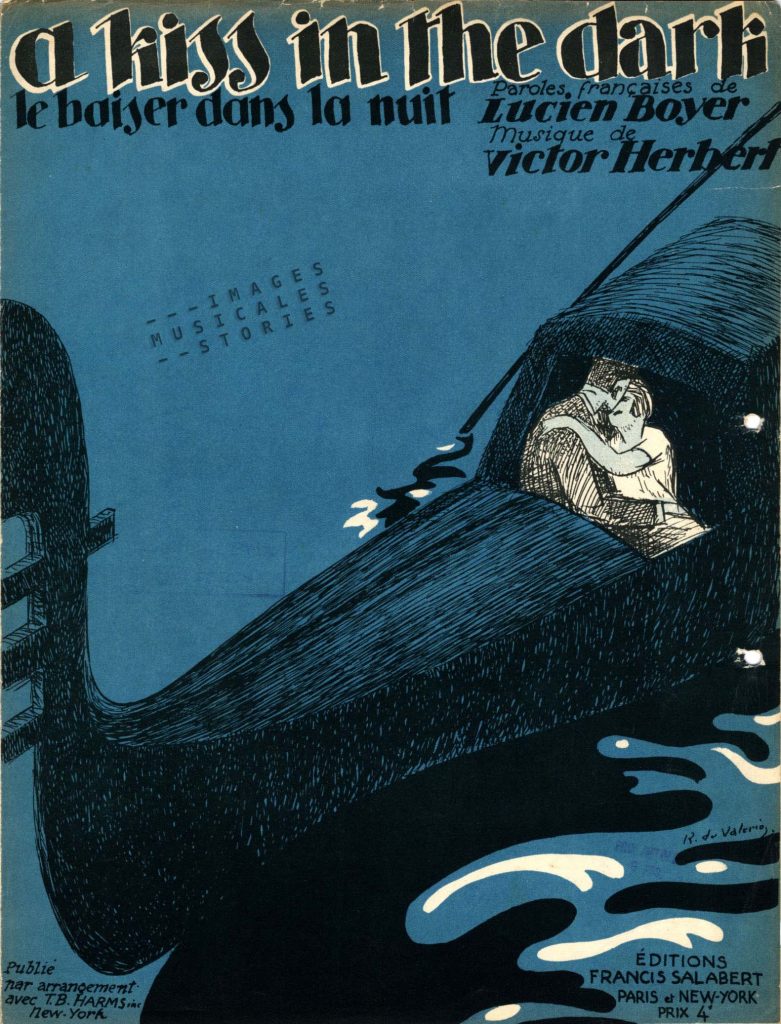
From the creative energy of another giant of illustration, Roger de Valerio, emerged a similar powerful image of luxurious intimacy under a cloak of Venetian darkness. De Valerio probably didn’t care about the exact morphology of the iron bow: three teeth are missing.
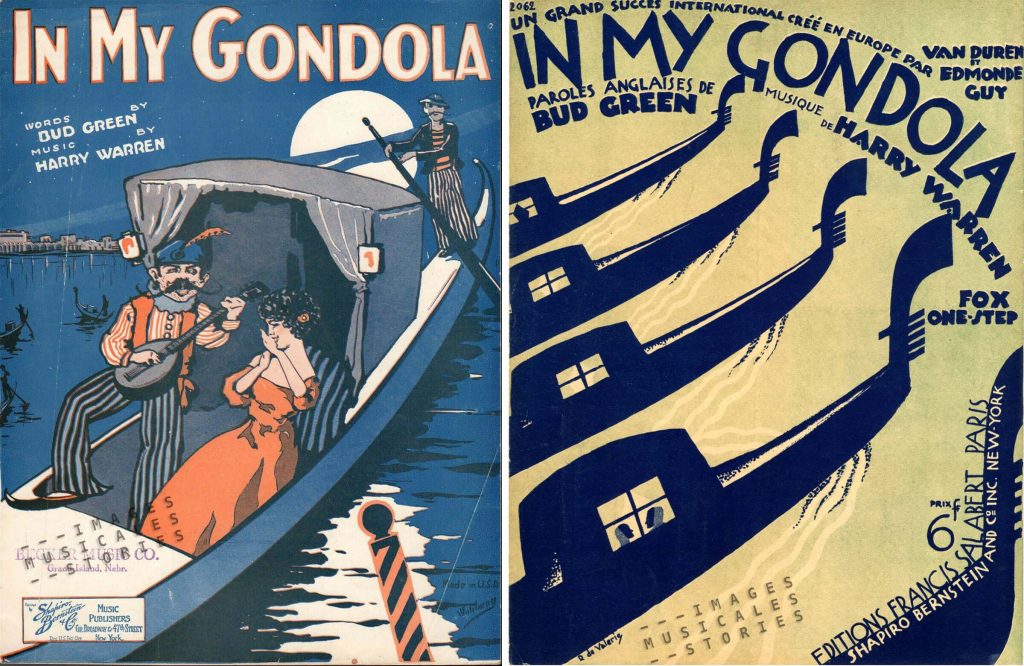
For the song ‘In my Gondola’ the original American cover shows a comic-like and anecdotal scene in a stereotypical Venice. In de Valerio’s modernistic version on the other hand the calm composition and the rhythm of the repetitive boats make a check of their mandatory curves and number of teeth irrelevant.
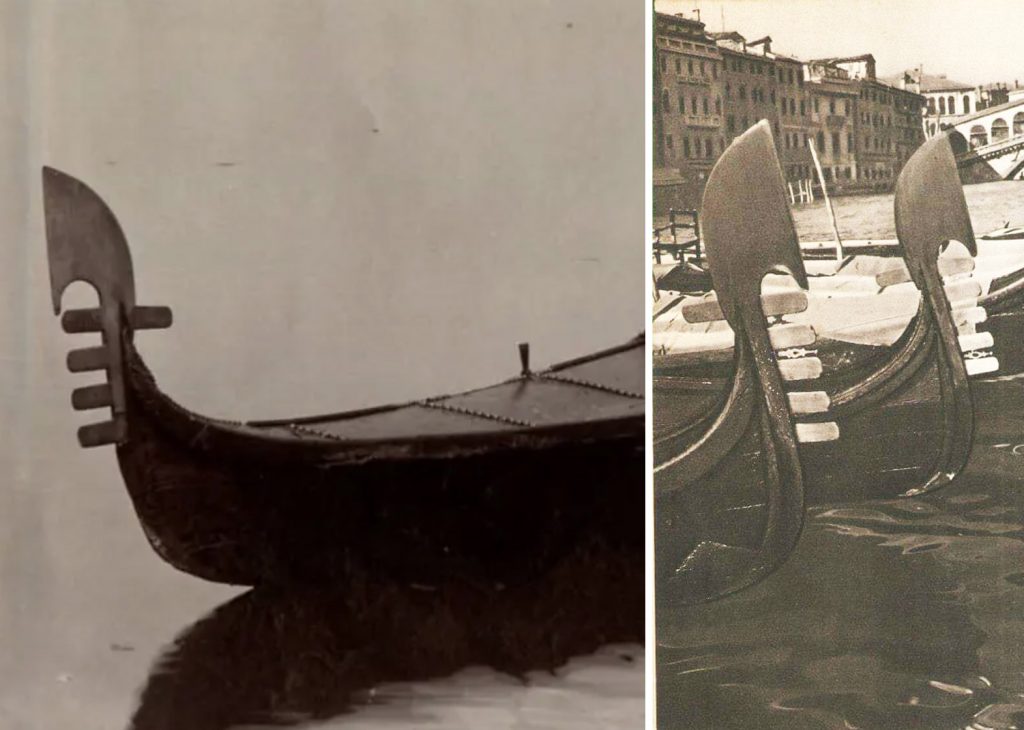
Besides, photographs from around 1900 show us gondolas with four or five teeth, so we can’t really blame de Valerio for not drawing the usual six.

Venezia, Venise, Venedig, where the full moon ever watches courtship. Otto Dely, another colossus in illustration land, depicts this romantic idyll for ‘Scheint der Mond auf Venedig‘…, with an almost perfect bow!
Some illustrators though were wide of the mark when trying to render a Venetian gondola. Next follows our short compilation of these faux pas.
Olivier Castel rightly insisted on the distortion of the bows drawn by Leon Pousthomis. We found another example in our collection, where the stern of the gondola much resembles the Loch Ness Monster emerging from the Venetian laguna.
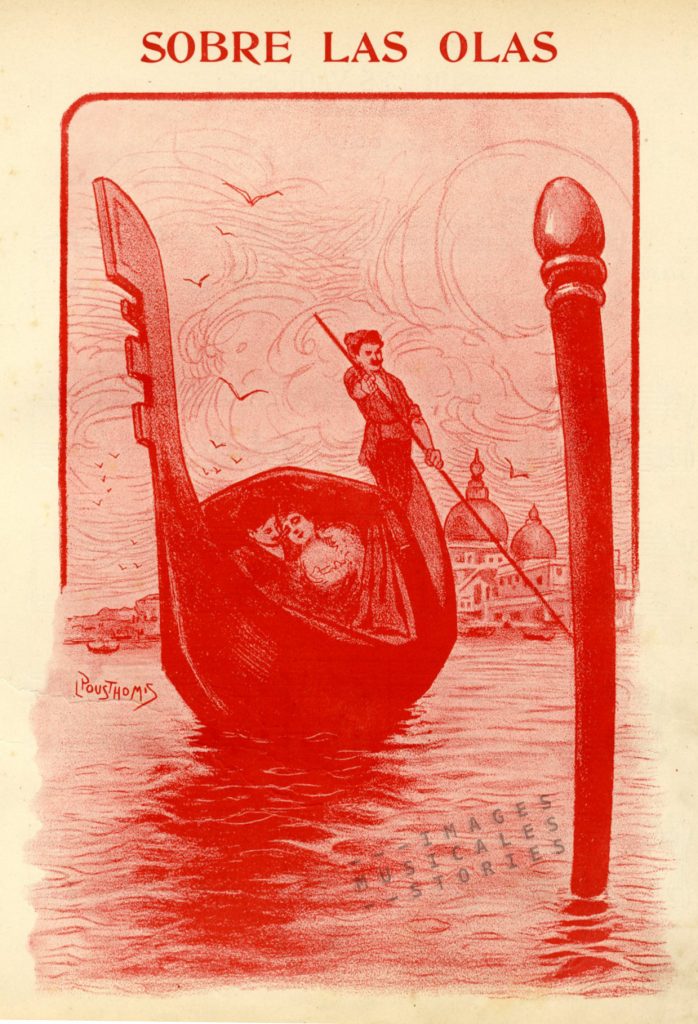
One should think Italians did know how to draw a gondola, or didn’t they? Oops, the fero on the prow is twisted inwards!
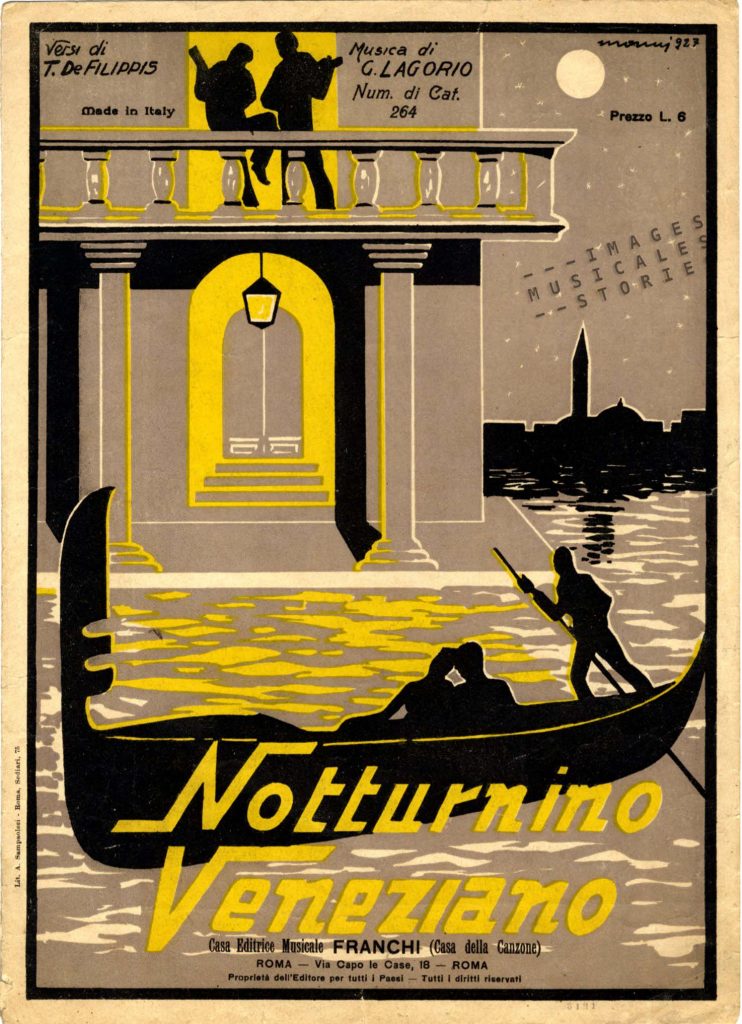
The unknown Spanish illustrator of ‘Morir de Amor‘ moved the ornamental fero from the bow to the stern of the boat, added a practical hole in it, and drew only two teeth. A fiasco, though good points for colourfulness and romance.
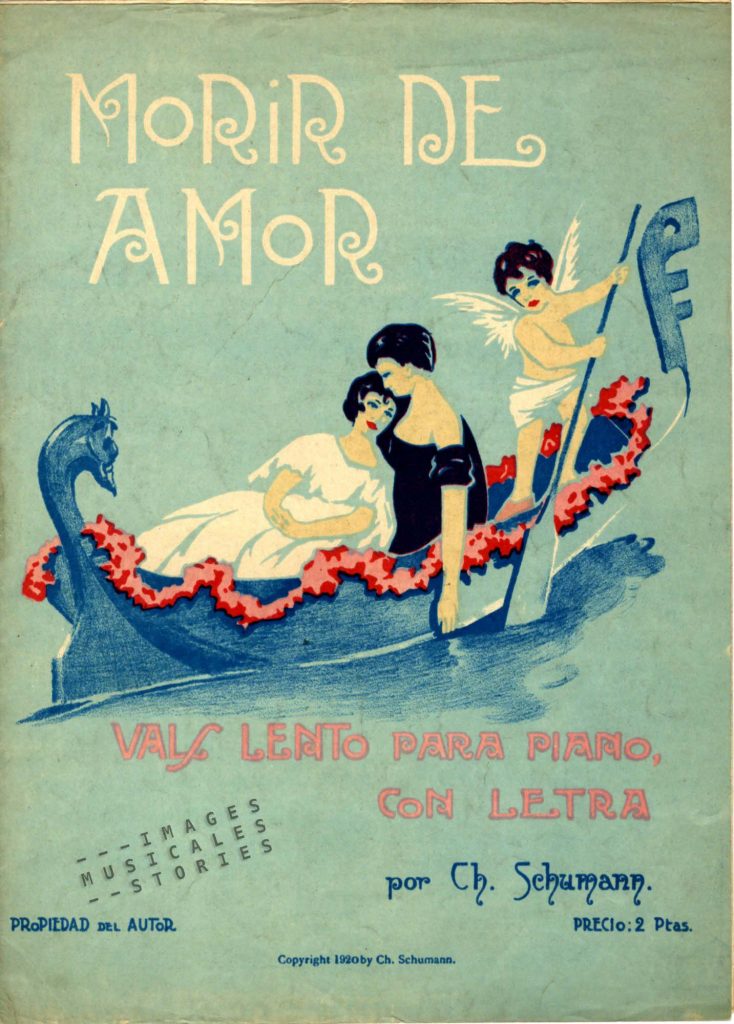
‘La Barcarolle‘ scores okay for the full moon, but stern and bow of the gondola are the same: zero points.
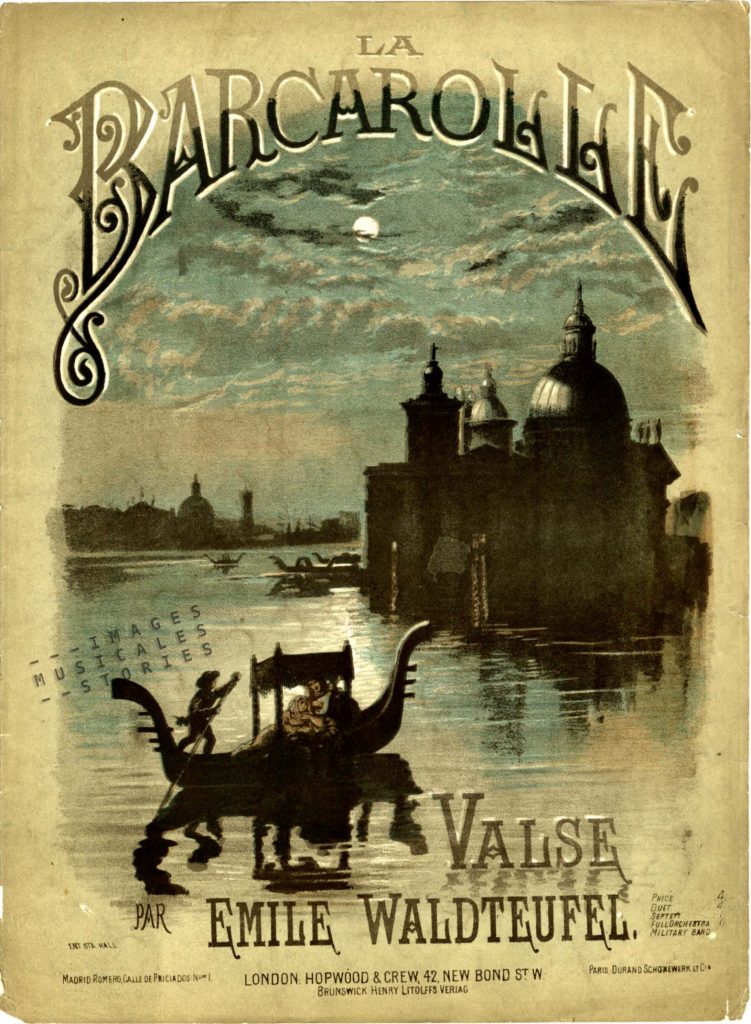
And if you can’t make head nor tail of the Venetian gondola, then simply drop the prova. No need for realism to draw a striking image, isn’t it Paul Telemann?
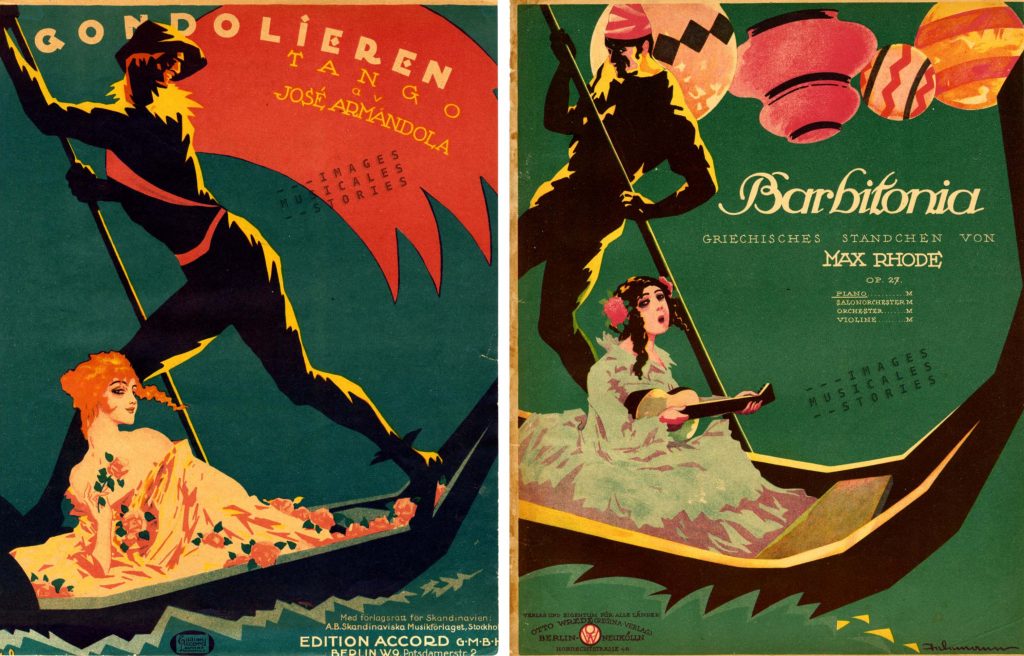
At last, a dishonourable mention goes to illustrator Capitan for his drawing of a pitiful gondola bow for Je connais ton pays. The full moon is not at the romantic rendezvous, but we imagine the ultimate Venetian stereotype of the boy passionately singing O sole mio, as it is often offered to tourists enjoying a gondola ride in Venice though it is a Neapolitan song. In the eighties tourist officials even ordered gondoliers to stop crooning O sole mio because it is not Venetian. Naples reacted by sending a group of strolling musicians to Venice to make sure tourists had their fair share of Neapolitan melodies.

It’s now or never, thinks The King.
